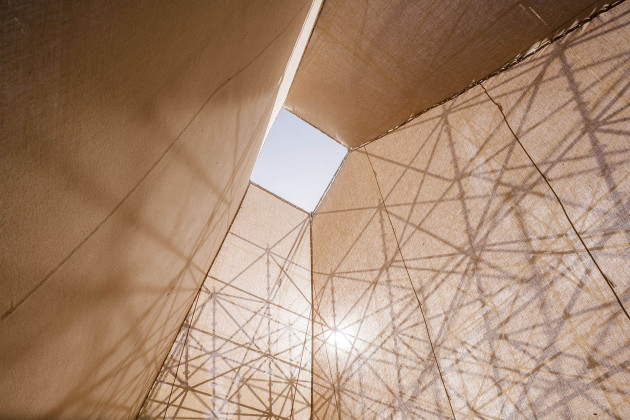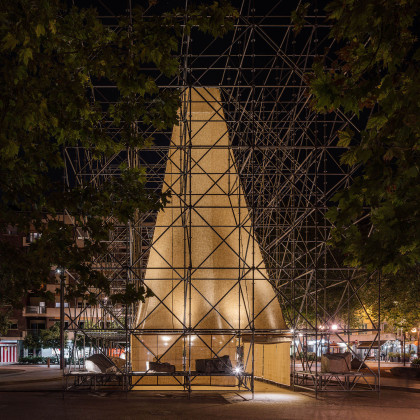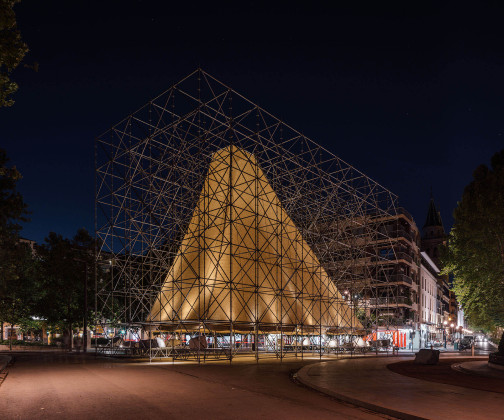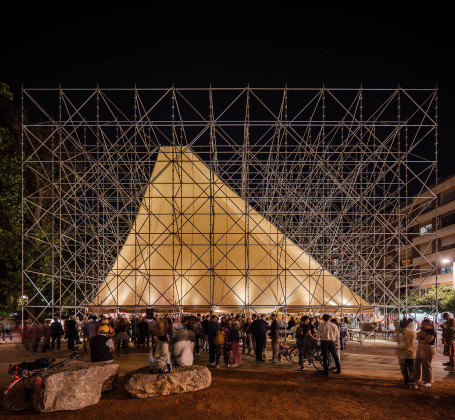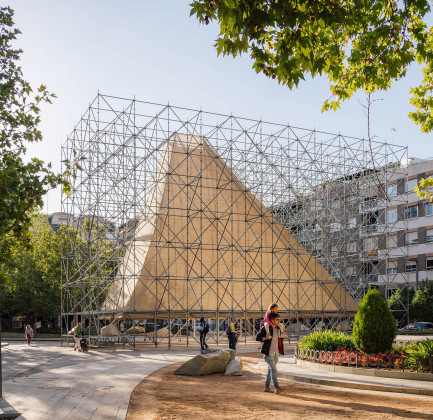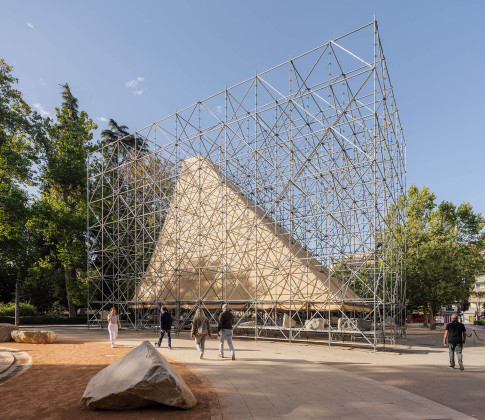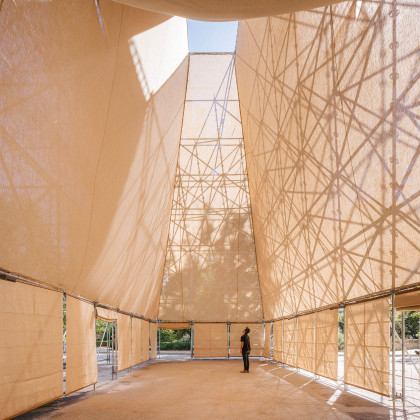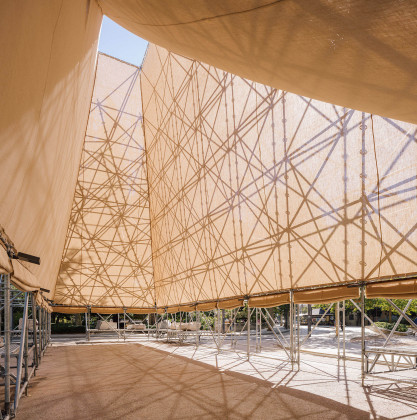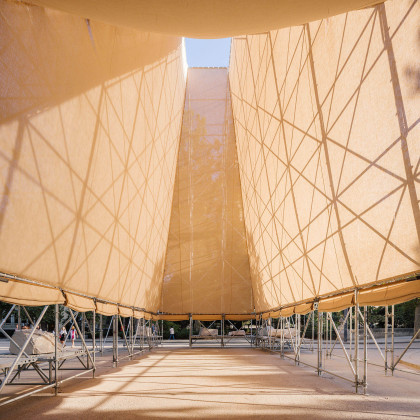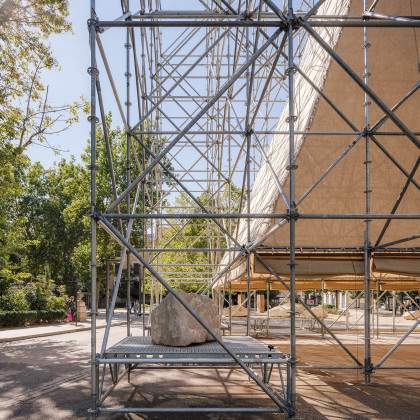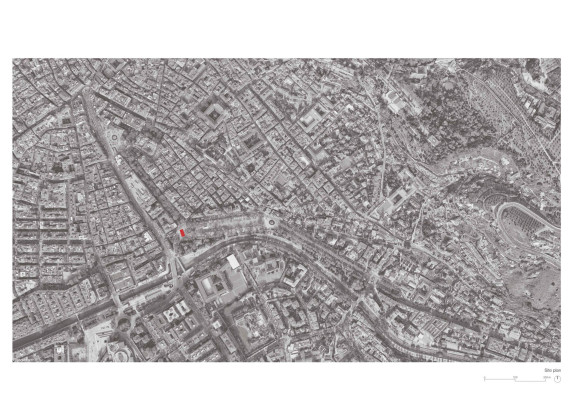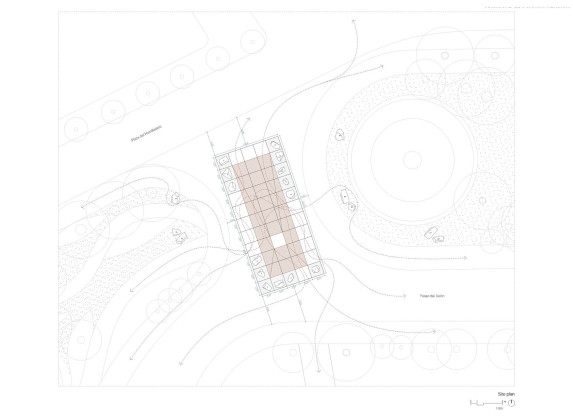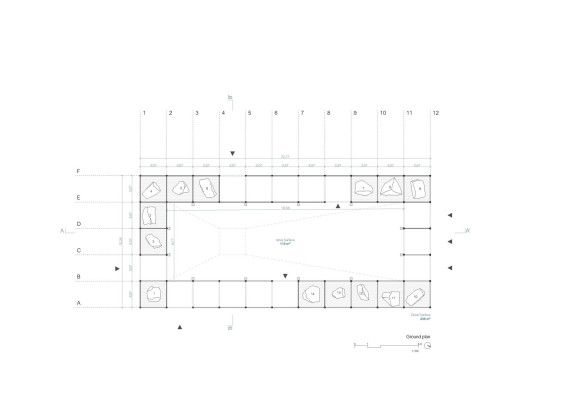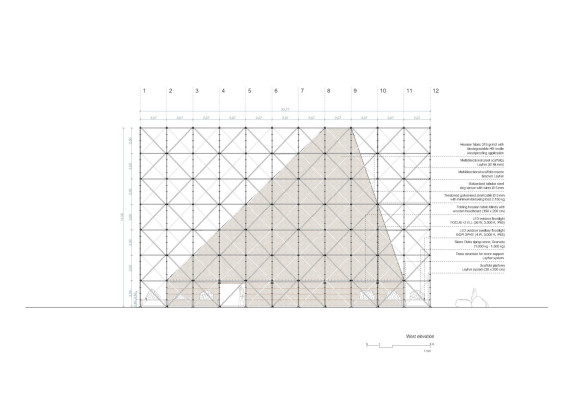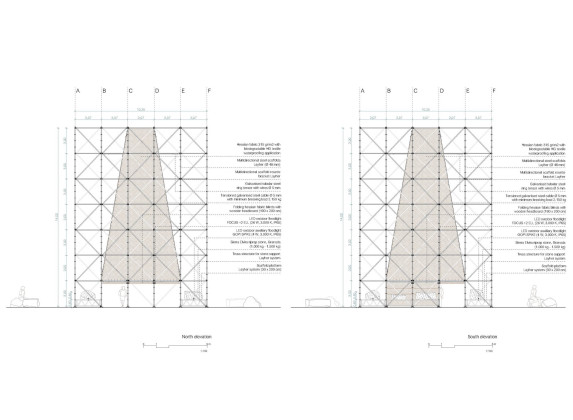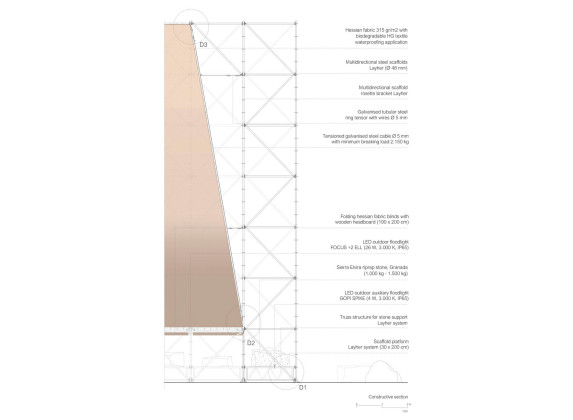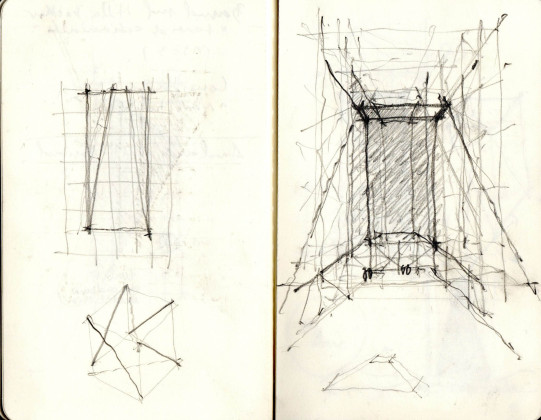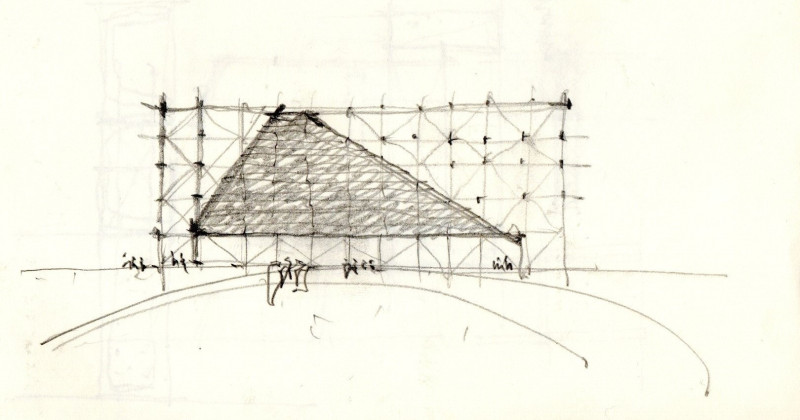Aire Pavilion
Aire Pavilion, designed by P + S Estudio de Arquitectura, was built for the TAC! Urban Architecture Festival 2022. The office describes the project as follows:
Aire pavilion is built on the imaginary of the ephemeral, the fragile and immaterial, alluding to one of the most essential and intangible elements of architecture. As occurs in a tent in the middle of the desert to protect from the sun, or in the airy space of the circus supported by a series of masts, an image that reflects the condition of the unfinished or in the process of being erected with all its corporeity, a half-finished architecture, is constructed. Thus, the spatial strategy of the pavilion is synthesised in the elementary operation of containing the Aire that will define an indeterminate space, open to the multiple needs of both the TAC! Festival and the city of Granada and its inhabitants; promoting the transformation and adaptability of the space, without requiring greater operations than opening or closing the fragile limit that defines it.
Aire is resolved solely by means of three material strategies, which seek to establish an exercise in synthesis, constructive veracity and sustainability. Firstly, a scaffolding system, a reflection of industrial systematization, which, although it has its origins in the very beginnings of the architectural tradition, today represents modularity and globalization in construction, as well as ephemerality and apparent fragility, which is condemned to disappear once the work is finished. This system resolves the load-bearing structure of the pavilion; a resistant fabric that is linked to a lighter one, an envelope of hessian fabric, a symbol of locality, handicraft, the shade (or the control of light), tradition and vernacular knowledge, the recognisable, the commonplace of the area. A way of rescuing Granada's own identity and its climate. Finally, a group of riprap stones from Sierra Elvira provides the necessary counterweight to the structure and implements new urban furniture in the surroundings of the pavilion, connecting the intervention with the Plaza del Humilladero.
The use of these three materials demonstrates Aire's commitment to the circular economy, as well as to the value of the local economy and the traditions and trades of Granada. Thus, the scaffolding, which is rented, will be put to a new use once the pavilion is dismantled; the same goes for the riprap stone, which will return to its original quarry; and finally, the locally made hessian fabric, which will also have a second life, as it is an element widely used as a shade in the city, and can be easily relocated to another public space in Granada.
In this way, Aire "rises", as its own etymological origin indicates, in search of light, taking shape as a pavilion woven between scaffolding and hessian fabric, establishing a new scenario of diverse, open, indeterminate and flexible encounters that will allow new relationships and uses to be woven into the Plaza del Humilladero in Granada.
 11.03.2023
11.03.2023



